
Francine Clark (1876-1960) was a French actress, art collector, horse breeder, and philanthropist.

Francine Clark (1876-1960) was a French actress, art collector, horse breeder, and philanthropist.
Francine Juliette Modzelewska was born in 1876 in France to a single mother who worked as a dressmaker. Francine changed her Polish surname Modzelewska to "Clary" sometime during her late teens. [1] An actress with the famed Comédie Française, Francine appeared on stage with Sarah Bernhardt during her career. [2]
Francine married Sterling Clark of the Singer Sewing Machine fortune in 1919. [3] Francine had a daughter, Viviane, from a previous relationship which proved to be a source of tension among the Clark family. None of the other Clarks attended Francine and Sterling's civil ceremony held in France. Francine became an American citizen the day after the ceremony. [4] The Clarks moved to New York City and established their residency in an eighteen-room apartment on Park Avenue, but continued to split their time between Paris and New York City for the remainder of their lives. Francine and Sterling "adored each other," a friend of theirs later wrote, and shared a taste for "great comfort without ostentation, good food and ... vintage Bordeaux." [5]
Francine and Sterling raced horses in the United States and Europe. In 1930, they purchased forty-five acres in Normandy to establish a horse farm, in addition to building a large horse farm in Upperville, Virginia. [6]
Francine Clark died in 1960.
Together, the Clarks created a collection of paintings, silver, sculpture, porcelain, drawings, and prints with complete reliance on their own judgments and tastes. Like her husband, Francine had an avid interest in collecting art, giving her opinions when the couple met with dealers. Sterling referred to his wife as his "touchstone in judging pictures." He once described Francine as "an excellent judge, much better than I am at times, though I have known her to make mistakes on account of charming subjects." [7]
In 1950 the Clarks founded the Sterling and Francine Clark Art Institute as a permanent home for their collection. During construction, Sterling and Francine lived in an apartment on the campus, overseeing every detail of the original 1955 building. [8] The museum first opened to the public in 1955.

Singer Corporation is an American manufacturer of consumer sewing machines, first established as I. M. Singer & Co. in 1851 by Isaac M. Singer with New York lawyer Edward C. Clark. Best known for its sewing machines, it was renamed Singer Manufacturing Company in 1865, then the Singer Company in 1963. It is based in La Vergne, Tennessee, near Nashville. Its first large factory for mass production was built in 1863 in Elizabeth, New Jersey.
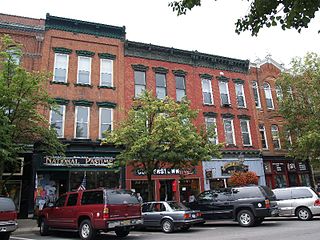
Cooperstown is a village in and county seat of Otsego County, New York, United States. Most of the village lies within the town of Otsego, but some of the eastern part is in the town of Middlefield. Located at the foot of Otsego Lake in the Central New York Region, Cooperstown is approximately 60 miles southwest of Albany, 67 mi (108 km) southeast of Syracuse and 145 mi (233 km) northwest of New York City. The population of the village was 1,852 as of the 2010 census.
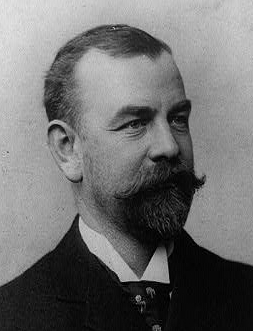
Commodore Frederick Gilbert Bourne was an American businessman. He served as the 5th President of the Singer Manufacturing Company between 1889 and 1905. He made the business "perhaps the first modern multinational industrial enterprise of any nationality".
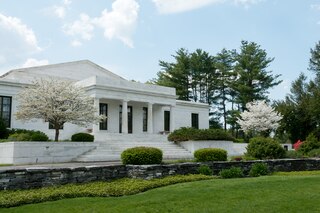
The Sterling and Francine Clark Art Institute, commonly referred to as the Clark, is an art museum and research institution located in Williamstown, Massachusetts, United States. Its collection consists of European and American paintings, sculpture, prints, drawings, photographs, and decorative arts from the fourteenth to the early twentieth century. The Clark, along with the Massachusetts Museum of Contemporary Art and the Williams College Museum of Art (WCMA), forms a trio of art museums in the Berkshires. The institute also serves as a center for research and higher learning. It is home to various research and academic programs, which include the Fellowship Program and the Williams College Graduate Program in the History of Art. It is visited by 200,000 people a year.

Alfred Corning Clark I was an American philanthropist and patron of the arts.
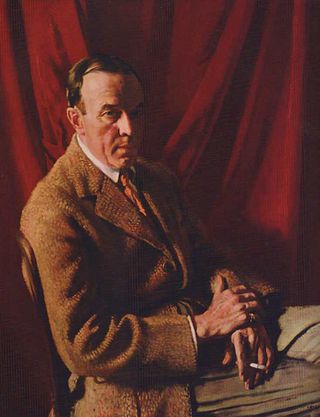
Stephen Carlton Clark was an American art collector, businessman, newspaper publisher and philanthropist. He founded the Baseball Hall of Fame in Cooperstown, New York.
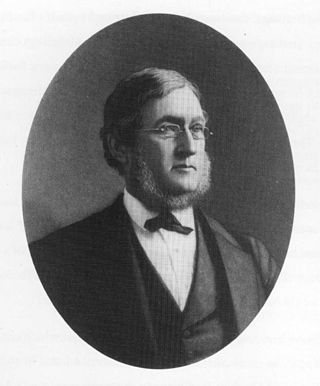
Edward Cabot Clark was an American lawyer, businessman and investor.
Edward Severin Clark was an American businessman, and the owner of the New York City apartment building The Dakota.

Candida Höfer is a German photographer. She is a former student of Bernd and Hilla Becher. Like other Becher students, Höfer's work is known for technical perfection and a strictly conceptual approach. From 1997 to 2000, she taught as professor at the Hochschule für Gestaltung, Karlsruhe. Höfer is the recipient of the 2018 Outstanding Contribution to Photography award, as part of the Sony World Photography awards. She is based in Cologne.

Robert Sterling Clark, an heir to the Singer Sewing Machine fortune, was an American art collector, horse breeder, and philanthropist.

Frederick Ambrose Clark was an American heir and equestrian.

Ambrose Latting Jordan was an American lawyer, newspaper editor and politician.
Modzelewski is a Polish surname. It may refer to:

Annabelle Selldorf is a German-born architect and founding principal of Selldorf Architects, a New York City-based architecture practice. She is a fellow of the American Institute of Architects (FAIA) and the recipient of the 2016 AIANY Medal of Honor. Her projects include the Sunset Park Material Recovery Facility, Neue Galerie New York, The Rubell Museum, a renovation of the Sterling and Francine Clark Art Institute, David Zwirner's 20th Street Gallery, The Mwabwindo School, 21 East 12th Street, 200 11th Avenue, 10 Bond Street, and several buildings for the LUMA Foundation's new contemporary art center in Arles, France.

Before the Race (1882–1884) is a painting by Impressionist painter, Edgar Degas, who began painting scenes with horses in the 1860s.

The Mary Ann Beinecke Decorative Art Collection is a research collection of more than 1200 volumes on textiles and decorative art subjects, which is held in the Library of the Sterling and Francine Clark Art Institute.

The Snake Charmer is an oil-on-canvas Orientalist painting by French artist Jean-Léon Gérôme produced around 1879. After it was used on the cover of Edward Said's book Orientalism in 1978, the work "attained a level of notoriety matched by few Orientalist paintings," as it became a lightning-rod for criticism of Orientalism in general and Orientalist painting in particular, although Said himself does not mention the painting in his book. It is in the collection of the Sterling and Francine Clark Art Institute, which also owns another controversial Gérôme painting, The Slave Market.

Auguste Renoir painted two very similar versions of Blonde Bather in 1881 and 1882. The model was Aline Charigot, later to become Renoir's wife. Influenced by Renaissance painting that Renoir saw in Italy in 1881, both paintings show a marked change of style from Renoir's previous work. Some commentators consider these are works of great beauty, others that they are vulgar. There has been criticism of the conservation work performed on the 1881 painting.

Lorentz Severin Skougaard was a Norwegian tenor.

Joséphine Bowes, Countess of Montalbo was a French-born actress, artist, collector and patron of the arts. She was married to fellow collector John Bowes, son of John Bowes, 10th Earl of Strathmore and Kinghorne. She and her husband founded the Bowes Museum in Barnard Castle, Teesdale.